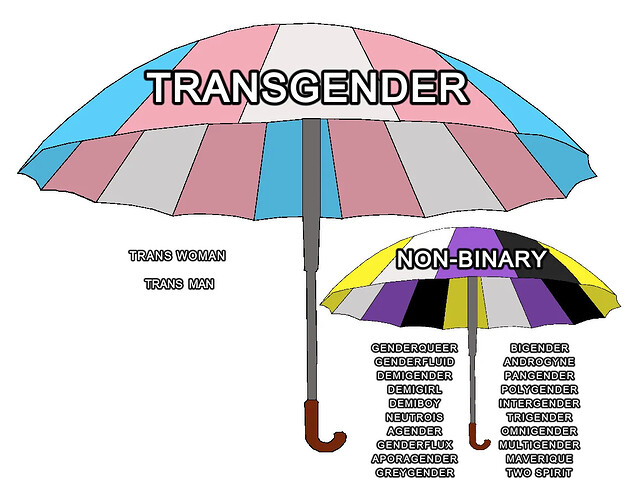To my knowledge, this is when someone is either: intersex and it is later changed because of mutilating genitals to attempt to make them conform to male or female; or are confusing in appearance of genitalia (babies are rather small), an example being having a larger than normal clitoris that was once made smaller. Don‘t know how often this surgery happens now, it mostly starting in the early 1950s in ”civilised” countries, possibly because plastic surgery started to be done as early as 1942 because of burns, &c, in the Second World War as there was a higher survival rate in aircraft after the introduction of parachutes.
As i seem to be restricted from adding any more replies, i add to this one.
In response to @Nick-Hall post 97:
Sex is primary, i don‘t have a gender identity it being others who identify me as female; therefore, i think that it is wrong to attempt to force anyone into a gender category, as this is not how the majority see themselves instead being as their sex. As there can be only three sex categories (the classical Greeks had this intersex being as ἐρμαφρόδιτος, copied (to my knowledge) by the Romans, and who knows what unrecorded folk such as the Celts did—nudity wasn‘t an issue with these three folk so that being intersex would have been obvious) plus unknown, this thus being primary; yet there is an increasing number of gender categories of which (in my experience) are self–assigned, so this has to be logically the secondary field.
The word ’androgyny’, and related words, refers to hermaphrodites and isn‘t anything to do with gender—it has a similar meaning to the word ’epicene’ having both male and female sexual characteristics.
The purpose of genealogy is the recording of one’s ancestors, this is what the Greek-derived word means. The Greek word γένος is cognate with the English word ’kin’ which means one’s ancestors (including one’s parents), and it is usually nowadays misused; the English word ’kith’ refers to all one’s other relatives: hence the phrase ’kith and kin’. Being an ’alien abductee’  (forced and secret adoption) i only include actual relatives in my tree.
(forced and secret adoption) i only include actual relatives in my tree.
In response to @Nick-Hall post 108:
I disagree: this is a European ’Western’ creation.
I’m not a letter in a string of letter collectivisation, having never consented for anyone to ”re-present” me here.
I don‘t think that there is any point in my further replying here (and i can‘t add any more posts, it becoming tedious), as a ’Western’ ideology is guiding it all. Been interesting all the same, and should it come about as you plan it, i’ll see whether it is relevant to me…or not. No hurty feelings here.
I don‘t identify, i am!—the problem is the loss of being having been replaced by having.
Try, without technology: sitting in the woods or on a mountain for awhile merely being; or walk on and on in a forest without thought of return…
Also, i’m not European in appearance nor in culture. 
